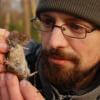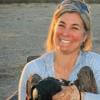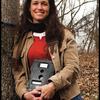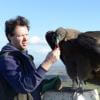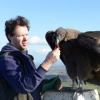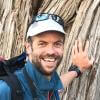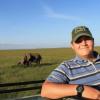Sensors already equip a range of tools to enhance monitoring capacity for conservation. Some of the higher bandwidth technologies, like camera traps and acoustic monitoring systems, have been essential elements of the conservation toolkit for decades, and thus have enough users that we've created dedicated WILDLABS groups to address them. But a whole range of lower bandwidth sensors beyond these core technologies are being increasingly integrated into conservation monitoring systems, and offer rich new insights into the wildlife and ecosystems we're all working to protect. As with many technologies, cost and access have historically been challenges to the adoption of new sensors, but with low-cost and open-source solutions on the rise, we're excited to see what the future of this space holds.
Getting Started with Sensors:
- Watch Shah Selbe's Tech Tutors episode on scaling FieldKit, an open-source conservation sensor toolbox, from a project to a successful conservation tech product.
- Check out our Virtual Meetup about Low-Cost, Open-Source Solutions in conservation tech, including a talk by Alasdair Davies on the Arribada Initiative's work with thermal sensors in early warning systems.
- For a more in-depth introduction, watch the first video in our datalogger mini-series: Freaklabs: How do I get started with Arduino?
In this group, you'll meet others who are using and innovating diverse sensors in their work, discuss ways to make sensors more effective & accessible for conservationists, learn about what sensors are already helping us accomplish in the field, and have the opportunity to ask and answer questions. Join this group to get started!
Header image: Emma Vogel, University of Tromsø
No showcases have been added to this group yet.
Samantha is a founding member and runs the Kelp Forest Foundation which looks to fill the gaps in the science around kelp cultivation.
- 0 Resources
- 1 Discussions
- 1 Groups
Wildfowl & Wetlands Trust (WWT)
Technological support in WWT's Conservation Evidence Department - recently made redundant
- 0 Resources
- 2 Discussions
- 5 Groups
University of Melbourne
- 0 Resources
- 4 Discussions
- 7 Groups
Retired engineer, with long term interest in ecology and all things tech.
- 0 Resources
- 1 Discussions
- 6 Groups
World Wide Fund for Nature/ World Wildlife Fund (WWF)
- 0 Resources
- 0 Discussions
- 8 Groups
- 0 Resources
- 1 Discussions
- 1 Groups
CSIR-Central Scientific Instruments Organisation
- 0 Resources
- 1 Discussions
- 2 Groups
- 0 Resources
- 2 Discussions
- 10 Groups
- 0 Resources
- 0 Discussions
- 8 Groups
Columbia University
Graduate Student in the department of Anthropology
- 0 Resources
- 0 Discussions
- 12 Groups
- 0 Resources
- 3 Discussions
- 3 Groups
- 0 Resources
- 6 Discussions
- 4 Groups
In our new From the Field series, we're speaking with WILDLABS members to discover how they use technology in their work. Through these interviews we will be showcasing the variety of technologies our members are...
22 March 2017
Are you ready for this year's #Tech4Wildlife Photo Challenge? In anticipation, we're counting down our ten favourite entries from last year. Do you think you can top these?
1 March 2017
There’s no doubt about it. Bees are an important and integral part of our ecosystem, and their role as pollinators an incredibly important one. If you’re a fan of the popular TV drama series Doctor Who, you may be...
20 December 2016
The Conservation Leadership Programme (CLP) is a training and capacity building programme that targets individuals from developing countries who are early in their conservation career and demonstrate leadership...
21 November 2016
Technology by itself will not save pangolins or elephants, but it can help make major progress.
14 November 2016
Do you work on conserving Neotropical migratory birds? Do you need funding? Why not apply for a grant from the U.S. Fish and Wildlife Service through the Neotropical Migratory Bird Conservation Act's grant program? The...
8 November 2016
As a visiting research scholar with UNODC, Isla Duporge asked wildlife crime experts about their experiences using remote sensing technologies to combat illicit wildlife and forest activities. In this article, Isla...
7 November 2016
Seabirds are killed in longline fisheries at such a fast rate that albatrosses cannot breed fast enough to rebuild populations. Solutions exist to prevent this “bycatch”; current best practice recommends fishing...
5 August 2016
Caves don't tend to be well-liked ecosystems, being extremely dark, often quite cramped, and slippery. And the creepy-crawlies that live within them can be the stuff of nightmares. Nevertheless, one's attitude towards...
25 July 2016
More than half of all primate species are endangered, including our closest living relative, the chimpanzee. Could Passive Acoustic Monitoring (PAM) be applied to primates as well as it has been for other taxa? In this...
29 June 2016
How do new colonies come about? And why do we observe young colonies to grow much more rapidly than their own production of chicks would allow them to? As Jana W. E. Jeglinski explains, cutting edge developments of...
25 April 2016
The Captain Planet Foundation is offering EcoTech grants in the amount of $2,500 to engage children in inquiry-based project in STEM fields.
18 February 2016
August 2025
event
September 2025
event
March 2026
July 2021
December 2020
June 2020
17 Products
Recently updated products
121 Products
3 R&D Projects
84 Organisations
Recently updated products
Recently updated R&D Projects
Recently updated organisations
| Description | Activity | Replies | Groups | Updated |
|---|---|---|---|---|
| The European Space Agency have an exciting funding opportunity coming up and got in touch with us to ask that we share it with you,... |
|
Sensors | 8 years 1 month ago | |
| Hi Steph Sure - we'll have the projects confirmed by 30 June and I can highlight ones that might be of interest! Jenny |
|
Sensors | 8 years 1 month ago | |
| For those interested: in the acoustics channel I have posted news on our sound event recognition sensor, using conv-net: https://... |
|
Sensors | 8 years 3 months ago | |
| Hi Thomas We are mapping a very small area in real time. The data rate is controlled by the time it take to read all the DS18B20s. The logger I use in the Octogons is using... |
|
Sensors | 8 years 4 months ago | |
| For good measure, here's some cave survey porn of Hang Son Doong cave in China. https://www.youtube.com/watch?v=tOH4gbW18Ts |
+17
|
Sensors | 8 years 5 months ago | |
| I am not suggesting that GoPro cameras do not have applications in conservation, but if you follow the link you posted you will find questions being asked that a conservation... |
|
Sensors | 8 years 9 months ago | |
| Thanks for sharing this event, Jenny! Looks really interesting, hope to see you there. |
|
Sensors | 9 years 1 month ago | |
| Hi John and Adam, I've been hearing a lot about Oxford Nanopore Technologies and MinION over the last few months, and while it sounds fanastic, it's been... |
|
Sensors | 9 years 1 month ago | |
| Sensory: BBC Wildlife Director John Downer & the technology of 'spy-cam' filmmaking from Getty Images on Vimeo.Small Cameras, Big... |
|
Sensors | 9 years 3 months ago | |
| Hello all, I've been reading a lot about advancements in using thermal imaging technology for wildlife monitoring. I know... |
|
Sensors | 9 years 3 months ago | |
| Latest news about this project was picked up by the BBC world service for a short interview http://www.bbc.co.uk/programmes/p03nwl8g You can also read more here: http://... |
|
Sensors | 9 years 4 months ago | |
| Hi everyone, I'm working on a citizen science project forcused on using aquaculture for conservation and ecological... |
|
Sensors | 9 years 4 months ago |



